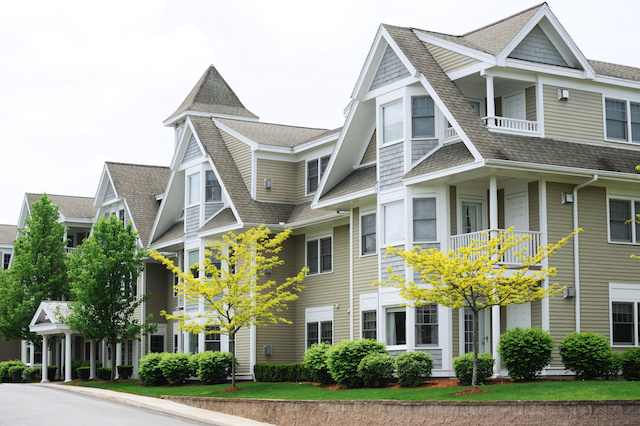Understanding the Function of Condo HOA in Community Administration
Understanding the Function of Condo HOA in Community Administration
Blog Article
Exactly How Condo HOA Controls Shared Areas and Enhances Area Harmony
The administration of shared spaces within a condominium organization plays a critical function in fostering community cohesion and preserving building worths. With the establishment of detailed standards, the Condo HOA not only controls using public amenities but also promotes a society of regard and accountability amongst locals. By addressing prospective disputes and helping with open discussion, the HOA can improve the overall living experience. The performance of these methods often hinges on energetic engagement and commitment from all participants, elevating questions about the finest strategies to achieve lasting community consistency.
Function of the HOA
The homeowners association (HOA) works as the regulating body for condominium communities, playing an important role in maintaining the building and promoting a natural living setting. It is in charge of enforcing and passing community policies and guidelines, which are developed to preserve the aesthetic worth and functionality of the shared room. This administration ensures that all residents abide by a standardized collection of assumptions, fostering a feeling of unity among diverse house owners.
Additionally, the HOA takes care of the financial facets of the community, consisting of budgeting, gathering fees, and keeping usual areas. This economic oversight is crucial in making sure that required upkeep and renovations are accomplished quickly, improving property values with time. The HOA additionally functions as an intermediary between locals and outside entities, such as city government and solution companies, attending to public issues effectively.
Additionally, the HOA commonly organizes area occasions and programs, urging neighborly interactions and developing relationships amongst locals. By helping with open interaction and resolving grievances, the HOA adds to a harmonious living setting. Therefore, its multifaceted role is necessary in making sure the smooth operation and overall satisfaction within condominium areas.
Regulations for Shared Rooms
Efficient governance in condo communities demands clear policies for common spaces, which are vital for keeping order and advertising a feeling of area among citizens. These rules act as standards that guarantee everyone can delight in common areas, such as swimming pools, gardens, and leisure centers, without problem.

In addition, sanitation and upkeep requirements are important, frequently specifying that citizens need to clean up after themselves and report any damages to the house owners' organization. By clearly interacting these expectations, the HOA can urge and decrease misunderstandings regard amongst locals.
Ultimately, well-defined rules for common spaces add to the total lifestyle in a condo community, permitting citizens to coexist peacefully additional hints while appreciating the amenities that boost their living experience. condo hoa.
Significance of Community Guidelines

Area guidelines play a substantial duty in fostering a cohesive and respectful atmosphere within condo associations. These guidelines develop clear assumptions for citizens, advertising a feeling of responsibility and shared obligation. By defining acceptable habits and techniques, area guidelines assist avoid misunderstandings and disputes amongst homeowners.
Furthermore, these guidelines offer as a framework for maintaining the aesthetic and functional honesty of shared spaces. They guarantee that all citizens comply with requirements regarding residential property upkeep, noise levels, and usage of communal facilities. This harmony not just enhances the aesthetic allure of the neighborhood but likewise contributes to overall residential or commercial property values, profiting all property owners.

Problem Resolution Approaches
Navigating conflicts within a condominium association requires a structured approach to guarantee fair and efficient resolution. Efficient problem resolution techniques commonly begin with open interaction, motivating citizens to voice problems in a respectful way. Developing a marked network for grievances, such as a recommendation box or an online discussion forum, can promote this process.
Arbitration is one more essential strategy, in which a neutral 3rd party assists contesting citizens reach a mutually reasonable remedy. This technique promotes collaboration and understanding, minimizing hostility - condo hoa. The HOA board should likewise develop clear procedures for addressing complaints, making sure all celebrations recognize the steps entailed
Regular problem resolution training for board participants can enhance their ability to handle disputes properly. Using a well-defined framework, such as the "Interest-Based Relational Approach," helps focus discussions on passions as opposed to settings, promoting a solutions-oriented attitude.
Benefits of Area Consistency
Promoting neighborhood harmony within a condominium organization brings numerous benefits that enhance the general living experience for homeowners. An unified click area encourages collaboration and collaboration amongst neighbors, leading to a more jovial atmosphere. When homeowners really feel revered and connected, they are more probable to take part in common activities and take part in decision-making processes, resulting in a stronger sense of belonging.
Moreover, community harmony considerably minimizes misconceptions and problems, which can otherwise interfere with every day life. A serene environment lessens stress and advertises psychological well-being, permitting citizens to enjoy their homes completely. Furthermore, harmonious partnerships frequently translate right into best site enhanced residential property values, as prospective purchasers are attracted to areas characterized by security and teamwork.

Verdict
With the facility of clear policies and area guidelines, homeowners are motivated to preserve a respectful and answerable setting. Ultimately, the initiatives of the HOA add to a natural community, advertising both property values and total resident complete satisfaction.
Additionally, the HOA typically organizes area occasions and programs, encouraging neighborly interactions and developing partnerships amongst homeowners. By defining appropriate actions and methods, community guidelines assist avoid misunderstandings and disputes amongst citizens.
Additionally, community standards assist in efficient communication amongst citizens and the Homeowners Association (HOA) Via the establishment of clear rules and community standards, locals are encouraged to maintain a liable and considerate setting. Inevitably, the initiatives of the HOA contribute to a cohesive community, advertising both home worths and total resident satisfaction.
Report this page